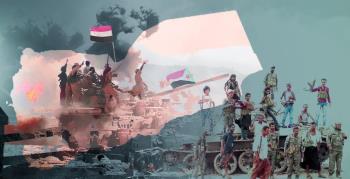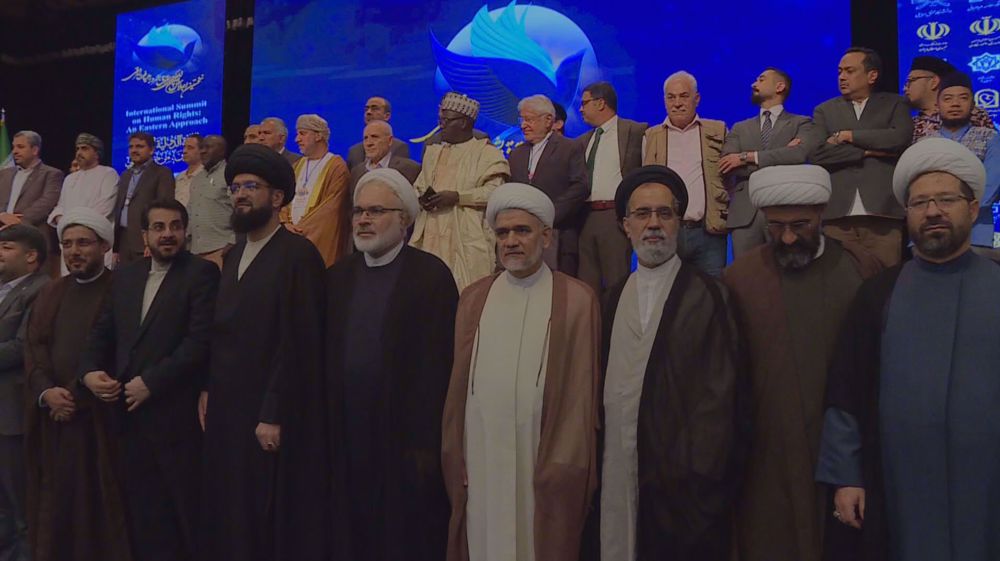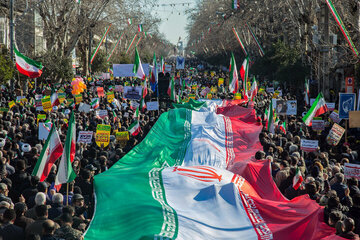Alwaght- The Syrian crisis’ political settlement process is faced by some challenges and concerns which make it necessary to watch closely the political and military fields. Such an attention becomes significant because any decision taken for the future of Syria, with a regard to the country’s geopolitical features and the religious and demographic distribution, could influence the political future of the country as well as the fate of the identity of the country as part of Axis of Resistance. This article aims to bring in spotlight the latest of Syria’s developments with a focus on the Russians’ and the central Syrian government’s reactions to the plan to introduce a federal system of governing to Syria.
On February 29, 2016, Russia’s Deputy Foreign Minister Sergei Ryabkov in a press conference talked about the convenience of implementing the federalization plan in Syria and added that “if the opposing sides after negotiations on the form of future Syrian government come up with the notion that the federal system is appropriate to keep Syria united, secular, independent and strong, who would disagree (with the federalization)? Russia would agree with any other plan for Syria future on condition that it is not dictated by a country thousands of kilometers away from Syria.”
Having this in mind, the Russian deputy minister’s remarks have created the notion that Syria federalization plan was actually the same as the “Plan B” that was raised by the US Secretary of State John Kerry on February 23, 2016 in a question and answer session asked for by the members of the US Senate Foreign Relations Committee about the alternative options once Syria’s “cessation of hostilities”- or ceasefire- plan collapsed.
Kerry explained that if the truce collapsed, the process would go ahead using other pathways which would be determined within upcoming one or two months. “Assad himself is going to have to make some real decisions about the formation of a transitional government process that is real … there are certainly plan B options being considered,” said John Kerry.
John Kerry’s words that the Syrian President Bashar al-Assad himself was going to make realistic decisions about formation of the transitional government has produced a media wave maintaining that Washington and Moscow had agreed on introduction of federal system of governing to Syria. That is why on February 29, John Kirby, the State Department spokesman, was asked about if the US’ Plan B for Syria was matching with Russia’s federalization plan, just like the fashion of Iraq. Kirby, however, have evaded giving certain answer, saying that the details of Washington’s Plan B had been uncertain and under inter-organizational deliberations. He continued that it was irresponsible to talk about an alternative plan before March 7, 2016, the due time for holding the new round of Geneva peace negotiations. Later, just against the public thinking, John Kirby has expressed Washington’s strong opposition to the federalization of Syria, calling federal system in Syria not an option but a source of fright. The State Department’s spokesman has added that this was the Russians’ plan and nobody sought establishing a federal system in Syria.
What the Russians’ called a federal system was actually an issue about which President Assad has talked in his joint interview with both the AFP and SANA (Syrian Arab News Agency) news agencies when he was asked if the future president of Syria in post-crisis era would grant the Kurds independence. Answering this question, the Syrian president has maintained that “this question is directly linked to the country’s constitution and you know the new constitution is not written by the government yet. All parts of Syria would have their say in the new constitution. The (Kurdish independence) issue would be decided on in a general referendum. So, federal system, autonomy, de-centralization or things like that are issues to be raised as a public question not as a question to any of Syria’s officials. All of these issues would be covered in Syria’s future political dialogue. But I need to highlight that the Kurds are a Syrian national group.
Accordingly, the current process indicates that federalization of Syria is the least plan the Russians and President Assad agree upon, while the Americans are against it because according to Washington’s calculations, the 85 percent Sunni population of Syria, once Sunni alternatives take Assad’s place, would not lean to Bashar al-Assad and the Baathist Alawites’ government. Thereby, the unity of Syria should be considered a goal for the US given the majority of future Syrian politicians would be secular and pro-Western and pro-American. But there are battlefield evidences based on which it looks that Russia and the central government of Syria are preparing the conditions in which they could convince the opposition forces to approve of a federal system with the current government staying at the center. Thus, on February 23, 2016, the Russian defense ministry, on the basis of US-Russian joint statement on cessation of hostilities, has formed a cooperation center in the Russian Hmeymim airbase in Lattakia province for Syrian government’s compromise with the opposition forces. The center included 50 members included in 5 groups, as it led by the Russian General Sergey Koralenko. Using a hotline, the Hmeymim center had contacts simultaneously with Jordan's Amman Operation Center and other similar centers in Moscow and Washington.
So, on February 27, 2016, the Russian ministry of defense has stated at 12.00 PM that according to an accord reached with the American side, it halted bombing the specified areas dubbed as “green zone.” Some parts of the green zone covered the presence sites of 17 armed groups that Moscow named them as “splinter or patriotic opposition.” Other parts included 74 areas the accurate parameters of which had been sent to the Russian data center by the Americans, and which included a list of armed groups with 6111 militant forces. As the process went on, the Russian defense ministry has published another statement on March 18, emphasizing on continued data exchange with the Russian representatives in Jordan-based operation center. “Up to March 18, 2016, 43 ceasefire application forms were signed by opposition leaders,” the statement read. The signatures were, the Russian defense ministry’s statement suggested, collected by Khalfi Turki Khasan, the leader of Jaish al-Ghabael- or the army of tribes in English- in Tal Abyad town in Homs province.
The statement also claimed that with a Russian defense ministry’s mediation, truce agreements were signed with administrative officials of 51 cities and villages in Hama, Homs, Daraa and Damascus. The statement also maintained that negotiations were under way with other opposition chiefs in the same cities. On March 27, 2016 the ancient city of Palmyra was recaptured after 10 days of fierce fighting. As Palmyra was liberated after ISIS’ retreat, the Russian ministry of defense has reiterated cooperation with Syrian opposition forces, adding that during the 10 day of Palmyra battle its fighter jets made 500 sorties near Palmyra and conducted 2000 airstrikes on ISIS’ positions around the ancient city in support of Syrian army’s forces as well as the “patriotic opposition forces” and splinter militants of the Syrian opposition who joined the Palmyra recapture battle.
As the evidences reveal, the Russians try to hold ceasefire in an area that covers Homs, Hama, Daraa and the capital city Damascus, apparently including the southern front and a small part of the northwestern fronts. This process makes sense when it is put beside the central Syrian government’s efforts to broker reconciliations. Thus the Syrian state ministry for reconciliation affairs is engaged in talks with ISIS’ and al-Nusra Front’s forces in Damascus and Daraa to prepare the ground for them to move to the northern provinces of Aleppo and Raqqa.
This is coming while the provision of security of cleared neighborhoods of Damascus is not given to the Syrian army or National Defense Forces but to the “moderate” opposition, which have small numbers of combat forces. It looks that the outcome of such a move is that the central Syrian government along with Moscow, based on their understanding of reality of Sunni population around the capital and the southern front, are busy conducting a kind of transfer of forces in the mentioned areas so that they create the least possible tensions for Damascus defense belt in the new Syria. The most significant point in this process is leaving the war with ISIS in northern front to the Syrian Democratic Forces, led by the Kurdish Democratic Union Party, and holding the fire unilaterally by the Russians and the central government in a major part of northwestern front, specifically Aleppo and Lattakia. Ignoring these areas and focusing on southern and central front, in Palmyra, and moving eastward to Deir ez-Zor could be interpreted as follows: The plan of the Russians and the central Syrian government for the country’s political future is a federal system in which the largest possible sway is secured for the central government. This case is understandable from the participation of opposition forces in Palmyra recapture operation. This process continued with foundation of a new structure called New Syrian Army on March 5, 2016. Defected from the Free Syrian Army, these fresh forces have crossed into eastern Homs through Jordan borders with Syria and reclaimed al-Tanf border area from the ISIS terrorist forces. This meant allowing the opposition to take part to seize territory at the intended areas, because giving territory to the opposition would mean giving assurances or buying their possible company to take advantage of them when a federal system would be proposed in peace negotiations.



























